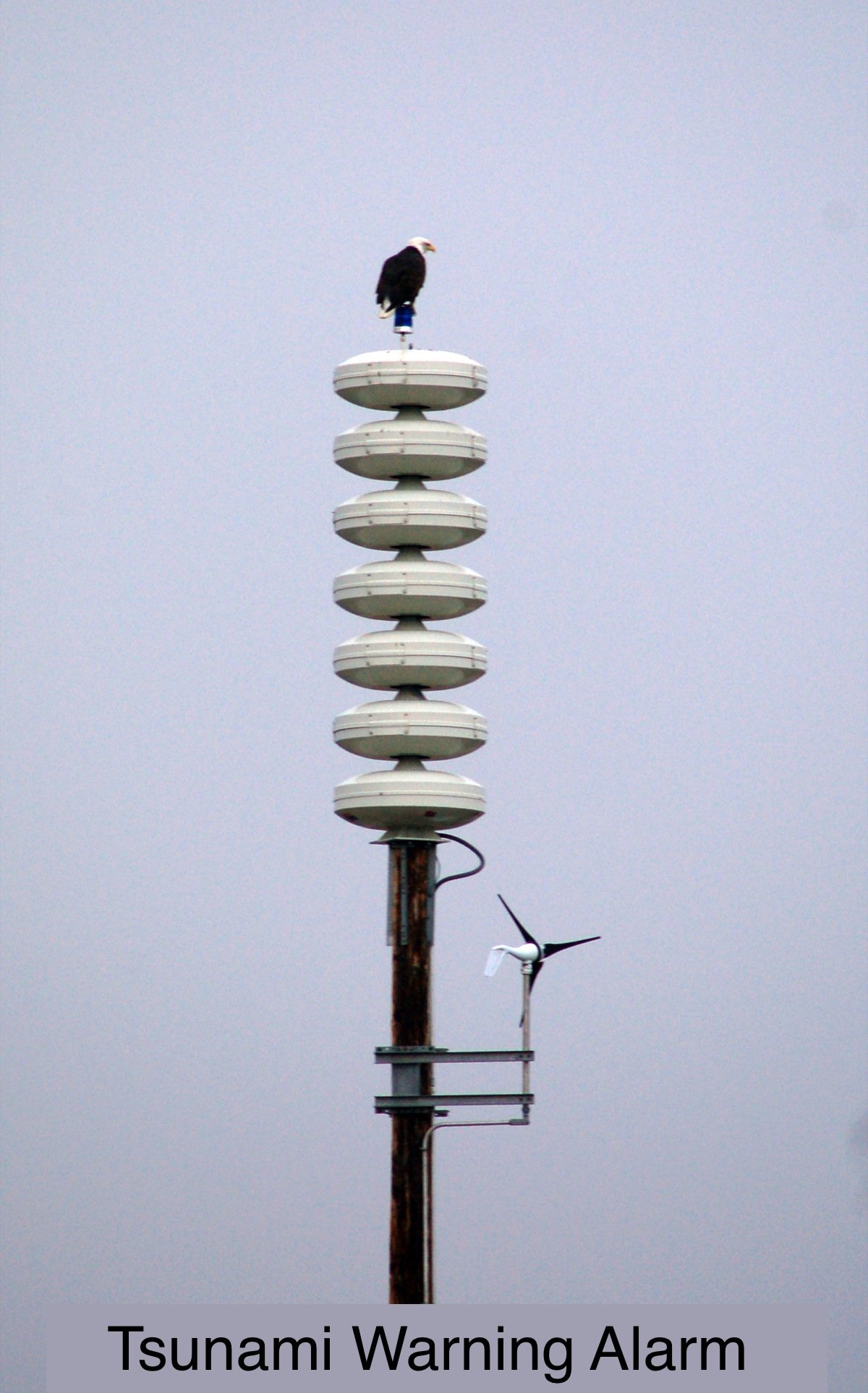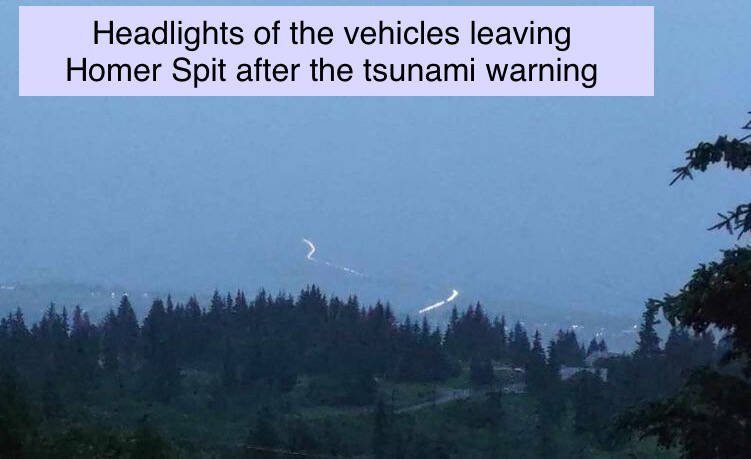Earthquakes, Volcanoes and Tsunamis - Oh My
/Tsunami!
While camping near Soldotna, Alaska not long ago, we had just started to doze off when the unmistakable clamor of an emergency weather alert came blaring from both our phones. After retracting our fingernails from Blanche’s headliner, we each grabbed our respective phones to see what the emergency was. A tsunami warning! “Head to higher ground immediately!”.
After experiencing one minor tsunami in Ecuador and hearing the accounts of several others during our travels on Nine of Cups, we don’t take them lightly. We pulled up a local map to see how far from the shore we were and where we might go. Once we figured out that we were ten miles inland and 100 feet above sea level, we relaxed - this is exactly where we would have headed had we been camping on the beach. Had this happened a week ago, however, when we were camped near the beach in Homer, you can bet we would have been packed and on the road to high ground in five minutes flat.
The tsunami warning was issued because of a 7.2 magnitude earthquake that occurred south of Sand Point, Alaska, about 600 miles southwest of us. The warning was later cancelled. While Alaska experiences thousands of earthquakes each year, fortunately, most are too small to even be felt. This one was certainly felt, but there was no wave damage and only some minor earthquake damage in Sand Point. That certainly wasn’t the case for other earthquakes in Alaska, however.
Alaska is the most seismically active state in the U.S. It was the epicenter of the largest earthquake ever recorded in North America and the world’s second worst earthquake since seismologists began measuring earthquakes in 1900 - a 9.2 magnitude quake that occurred in Prince William Sound in 1964.
The Great Alaska Earthquake
The 1964 Alaskan earthquake is also known as the Great Alaskan Earthquake, or since it occurred on March 27th - Good Friday, it’s also known as the Good Friday Earthquake. It lasted just over four minutes, and caused huge ground fissures, landslides, and major structural damage, as well as 131 deaths. Some areas were raised by 30 feet while other areas dropped by as much as 15 feet. Some towns were completely destroyed and a few, like Girdwood, were no longer above the high tide level and were forced to relocate. Resulting tsunami waves hit more than 20 countries, including New Zealand, Peru, Japan and Mexico. The largest tsunami wave, in Shoup Bay, Alaska, had a height of 220 feet!
Here are some of the stories:
Anchorage.
Much of downtown Anchorage was left in ruins. On Anchorage’s main street, 4th Avenue, the pavement and buildings dropped as much as 15 feet in places. Nine people died, but the death toll would probably have been much higher had the quake not occurred on Good Friday evening when most people were at home and not downtown.
Seward.
This was a thriving port and fishing town, and one of the few ice-free harbors in south central Alaska. Soon after the earthquake began, huge sections of the waterfront and harbor slid into the bay. The Standard Oil dock collapsed, and began spewing fuel. Soon after, the huge oil storage tanks fell over, ruptured and caught fire. The first tsunami, a 30 foot wave, carried the burning fuel inland, swallowing the remaining dock and port area, and causing 45 oil-filled railroad tank cars to explode. Twenty five minutes later, the next tsunami hit the town, a 40-foot wave, topped with burning fuel, moving at 100 mph. By the time the last tsunami hit, ten hours later, Seward was totally devastated.
Valdez.
This town, a thriving community of 1200 people, was situated at the head of a fjord in Prince William Sound. The main industries were fishing, shipping and tourism. On that Good Friday, the 400-foot freighter, SS Chena had just arrived, and 28 of the townsfolk were watching it unload. When the earthquake hit, huge fissures formed in town, spewing mud, water and sewage 20 feet in the air. As the quake reached its full intensity, it triggered an underwater landslide which generated a 40 wave, destroying the dock and the canneries, and killing all the people on the dock. The SS Chena hit bottom three times, and rolled and pitched so violently that 3 crewmen were killed. The subsequent tsunamis completed the destruction of Valdez.
The Army Corps of Engineers later surveyed the area, and recommended moving the town to a safer area a few miles away. The original townsite was abandoned.
Ironically, the Exxon Valdez oil spill occurred exactly 25 years later… to the day.
Chenega.
In this Aleut village, the beach was filled with people waiting for an evening movie to start. Twenty three people died when a 90 foot tsunami washed over the shore.
The Alaska Railroad.
In 1964, the railroad dominated the Alaska transportation system. Built in 1922, the rail system carried the bulk of the freight from the seaports of Whittier and Seward to Anchorage and the interior. The Good Friday Earthquake and subsequent tsunamis destroyed 200 miles of track, 125 bridges, 100 miles of rail bed and 225 pieces of rail stock.
The track that served Seward and Whittier followed Turnagain Arm, and some sections dropped as much as 8 feet, putting the track below the high tide level. Twice a day, the tide rose above the tracks, washing away parts of the rail bed, and twice a day, after the tide dropped back down, crews repaired the track in time for a few trains to run while it was passable. It took two years to fully raise the train bed to a safe level.
Of the 131 deaths, 115 occurred in Alaska. The remaining 16 fatalities were in California and Oregon as a result of the tsunamis.
Volcanoes
Along with all those earthquakes and tsunamis, Alaska has a lot of active volcanoes. According to the U.S. Geological Survey, there are about 500 volcanoes worldwide that have erupted in historical time (since 1760), and about 10%, 54 to be exact, are in Alaska. Since 1989, there have been at least 53 eruptions of 20 volcanoes in Alaska, as reported by the Alaska Volcano Observatory, which, I’d think, would know.
On two of the rare clear days we had on the west shore of the Kinai Peninsula, we spotted 4 of them:
Illiamna - last erupted Dec, 2011
Augustine - last erupted Jul, 2007
Redoubt - last erupted Apr, 2010
Spur - last erupted Jul, 2004
These 4 volcanoes have, in fact, erupted a total of 11 times since 1989. Something I just noticed is that the 12 years since one of these last erupted is the longest time span they’ve been quiet since the Alaska Volcano Observatory has been monitoring them. Does that mean they’re done spewing for awhile, or does it mean they’re overdue? Even if they’re overdue, the odds of any of them erupting while we’re visiting is minuscule… but all the same, the view is just fine from here at 40 miles away.

















